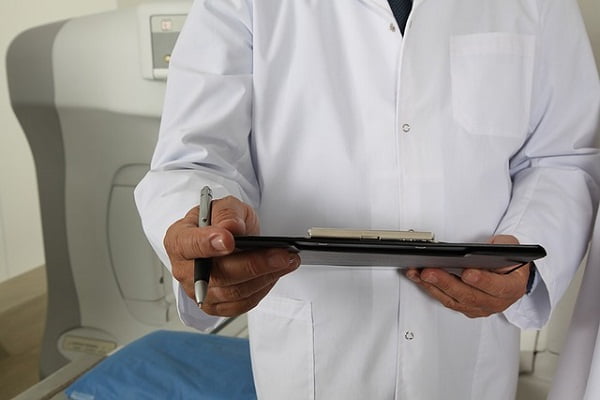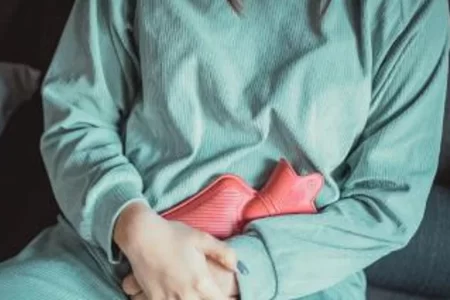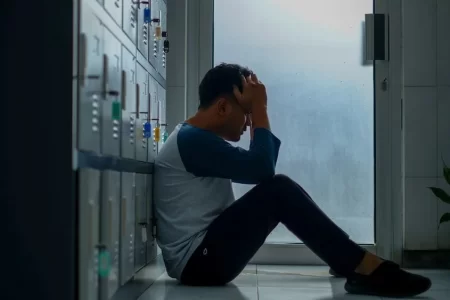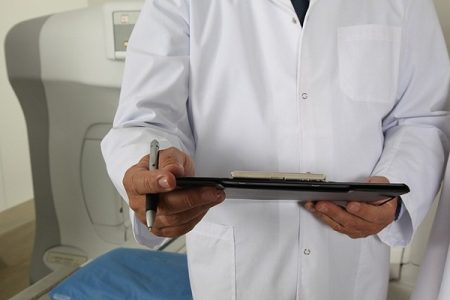
Hemorrhoids
Today, hemorrhoids have become extremely common in the United States. About 1 in every 4 people suffers from hemorrhoids. Hemorrhoids involve inflammation of the anal and rectum blood vessels. People with hemorrhoids experience various symptoms which are trouble causing, such as pain, bleeding, itching and discomfort.
As the incidences of hemorrhoids have increased, variable treatment options have become available. Treatment of hemorrhoids may range from home remedies to certain surgical intervention. Studies report that about 5-10% of patients do not respond to conservative treatment methods. They may need surgery. Doctors and researchers are finding new ways to cure and prevent hemorrhoids with minimum risk and side effects to the patients.
Hemorrhoids are classified as internal hemorrhoids and external hemorrhoids. Internal hemorrhoids are those which are present above the dentate line and covered with columnar epithelium cells. They are further graded according to Goligher’s classification. This division is based upon the degree of prolapse of the hemorrhoid, which is explained as follows:
- Grade I – Anal Cushions bleed without any prolapse
- Grade II – Anal cushions bleed upon straining, but may reduce spontaneously
- Grade III – Anal cushions prolapse upon straining or exertion and require manual reduction
- Grade IV – Prolapsed anal cushion is irreducible
Recent Advances in the Management of Hemorrhoids: Treatment of Grade I and Grade II Hemorrhoids
Conservative Treatment
These are discussed herein:
Lifestyle Modification
Doctors recommend certain lifestyle modifications for hemorrhoid patients to avoid prolonged straining on the rectum blood vessels. They usually advise increased intake of dietary fibers, oral fluids, improved anal hygiene; avoiding unnecessary strain on anal and rectum region and medications which may lead to constipation or diarrhea.
Oral Medications
Medication provided to grade I or grade II hemorrhoid patients act as a defensive treatment for prolapsed anal cushion or to control bleeding till the time a surgery is done or office procedure may take place. Some advanced medications for management of hemorrhoids are as follows:
- Micronized Purified Flavonoid Fraction
- Flavonoid
- Calcium Dobesilate (drug)
Topical treatment
Doctors also recommend certain topical medications which contain low-dose of local anesthetics, corticosteroids, keratolytics, protectants and antiseptics. These medications help in relieving hemorrhoid symptoms but they should not be used for longer durations.
Office Procedures/Outpatient Treatment Options
The ASCRS Guidelines for Management of Hemorrhoids states that many cases of grade I, II and III hemorrhoids do not respond to conservative treatment options. They require office procedures to decrease blood flow to hemorrhoids, reduce the damage to tissue and fix the damaged tissue to reduce prolapses.
Various office procedures are available to cure grade I and II hemorrhoids. They cause minimum pain but chances of recurrence of hemorrhoids may persist. The office procedures are as follows:
Rubber Band Ligation
Rubber band ligation is the most effective treatment method for grade I and grade II hemorrhoids and various grade III hemorrhoid cases also. It has a minimum chance of recurrence and success rate of 90% as compared to other outpatient procedures. It is useful in treating single and multiple hemorrhoids in a single ligation session.
Rubber band ligation is not advised to people with coagulation disorders, immunocompromised disorders and people suffering from cardiac disorders. In such cases, other surgical options are advised such as sclerotherapy and infrared coagulation.
Injection Sclerotherapy
Injection sclerotherapy is mainly used for treating bleeding hemorrhoids. Various sclerosants are used to fix the damaged hemorrhoid tissue, such as 5% phenol in almond oil, ethanolamine oleate, sodium morrhuate and sodium tetradecyl phosphate. It is recommended for patients with severe hemorrhoid bleeding or those who have a high risk of secondary haemorrhage or immune-compromised patients.
Injection sclerotherapy can lead to large number of complications such as anorectal abscess, retroperitoneal sepsis, necrotizing fasciitis, pulmonary allergic reaction and oleogranuloma. To avoid such situations, you can use certain physiological agents such as hypertonic saline and 50% dextrose solution.
Infrared Coagulation
Infrared coagulation involves application of infrared frequency waves to your hemorrhoid tissue. These waves may cause inflammation and destruction of the damaged tissue. Further scarring and tissue fixation may occur with the surrounding normal tissue.
Such a procedure requires multiple visits to a doctor’s clinic. It is a highly effective method as it is a quick and painless technique with minimum complications.
Radiofrequency Coagulation
Radiofrequency coagulation involves use of disposable probe. The positive and negative electrodes are aligned at the tip through which the current flows. The radiofrequency coagulation unit passes current in 3-4 areas of the hemorrhoid complex for about 2 seconds. Such procedures involve reduction and fixation of damaged hemorrhoid blood vessels with the underlying tissue by means of fibrosis.
It is a painless procedure but chances of recurrence of bleeding and hemorrhoidal prolapse persist. Radiofrequency coagulation also posses risk of several complications such as wound sepsis, acute urinary retention and peri-anal thrombosis.
Bipolar Diathermy and Direct-Current Electrotherapy
Bipolar diathermy and direct-current electrotherapy involves application of heat over the hemorrhoid tissue. This leads to coagulation and fibrosis of the damaged tissue, resulting in hemorrhoidal fixation. It has fewer complications and effective success rate in majority of cases.
Cryosurgery
Cryosurgery involves application of low temperature to create water crystals within the cells. This leads to destruction of cell membrane, thereby the death of the damaged tissue occurs. This method is not successful in treating hemorrhoids as compared to other methods, as it has various disadvantages such as profuse discharge, late return to work, painful procedure and prolonged recovery time.
Laser therapy
Initial Nd: YAG (neodymium-doped yttrium aluminum garnet) laser treatment method was used to treat hemorrhoid. But it was not effective as scalpel excision method. Recent advances in the management of hemorrhoids lead to a newer technique, known as CO2 laser or pulse or scanned laser. CO2 laser successively reduces postoperative pain and produces a better cosmetic scar.
Another cost-effective treatment method was designed for thermal occlusion of hemorrhoidal blood vessels, known as Doppler-guided hemorrhoidal laser.
Recent Advances in the Management of Hemorrhoids: Treatment of Grade III and Grade IV Hemorrhoids
Conventional Hemorrhoidectomy
The most effective treatment option for grade III and IV hemorrhoid involves a suitable surgical treatment method. Most hemorrhoid patients undergo hemorrhoidectomy.
Open and closed hemorrhoidectomy are commonly advised by doctors in severe cases. Out of these excisional hemorrhoidectomy has better responses as it has lowest recurrence rate of hemorrhoids. But postoperative pain and risk of complications occur, such as postoperative bleeding, delayed healing or non-healing of the wound, acute retention of urine, sepsis, anal stricture, mucosa prolapse and fecal incontinence, which affect 2-12% of patients who undergo hemorrhoidectomy.
Post-operative pain is the major corner of patients who wish to undergo hemorrhoidectomy and it can even delay the surgical treatment procedure. Researchers and doctors are finding effective ways to reduce post-operation pain. They may advice use of topical preparations such as drugs blocking calcium channels, local anesthetics, metronidazole, opioids and sucralfate drugs.
Common healthcare practitioners may recommend application of Glyceryl Trinitrate (GTN) at the site of wound or an injection of the botulinum toxin into the internal sphincter.
Diathermy Hemorrhoidectomy
During a diathermy hemorrhoidectomy surgery, doctors apply temperature of more than 150.C to allow coagulation in the damaged tissue. This leads to formation of an eschar which covers the bleeding region.
Patients after diathermy hemorrhoidectomy usually experience less bleeding; operating time may reduce and you may require minimal analgesic after operation.
LigaSure Hemorrhoidectomy
LigaSure vessel sealing system is one of the recent advancements for treating hemorrhoids. It involves use of a bipolar electrothermal device without sutures. It aims to reduce formation of painful diathermy burns at the anal canal and allow improved adhesion of tissue at the wound site. It also decreases the risk of post-operative hemorrhage.
LigaSure Hemorrhoidectomy is proven to be better than conventional hemorrhoidectomy as it has a reduced operative time, risk of urinary retention and postoperative pain is reduced and the time to recovery from surgery is also decreased.
Harmonic Scalpel Hemorrhoidectomy
Harmonic scalpel hemorrhoidectomy involves use of a harmonic scalpel, which is an ultrasonically-activated instrument. It vibrates at 55000MHz per second. It converts electrical energy to mechanical energy, leading to coagulation of small and medium sized hemorrhoid blood vessels. It is a highly safe technique as electricity does not pass through the patient and reduces the risk of lateral thermal damage.
Large number of studies showed reduced operative time, postoperative pain, blood loss, length of hospital stay and return to normal activity as compared to older hemorrhoidectomy methods.
Semi-closed Hemorrhoidectomy
Semi-closed hemorrhoidectomy involves repair of pectineal line of your rectum. Primarily, the doctor pushes out the internal hemorrhoid outward and then repairs the damaged skin layers. The skin layers are repaired using sutures. The top most skin layer is cut between the ligation and the external part of the damaged skin is removed.
This treatment method is preferred in cases, when the hemorrhoid is extremely large or a proximally extended internal hemorrhoid is present, which cannot be directly removed as it may lead to resection of the rectal mucosa.
Sub-mucosal Hemorrhoidectomy
Sub-mucosal hemorrhoidectomy is a specialized treatment method which reduces post-operative pain and prevents anal and rectal stenosis. It is designed by Parks to treat second, third and fourth grade hemorrhoids.
It involves hemorrhoidectomy by creating a smaller wound dimension and also prevents any damage to the anal canal mucosa and prevents occurrence of stenosis. A retractor is applied and a Y-shaped incision is made at the sub-mucosal layer. The mucosa is closed using sutures and a small area is left open for drainage. The mucosa layer is not ligated which indeed reduces the post-operative pain.
Submucosal hemorrhoidectomy has a longer operation time, higher recurrence rate and has a high risk of bleeding during and after operation.
Hemorrhoidal Artery Ligation
Hemorrhoidal artery ligation (HAL) is a non-excisional procedure which effectively reduces hemorrhoid symptoms by inhibiting the flow of blood to the hemorrhoid. The hemorrhoid arteries are localized using a Doppler probe.
HAL is an effective treatment method as compared to conventional hemorrhoidectomy. Patients experience minimal post-operative pain and may even recover faster. The incidences of complications are quite less.
Farag Procedure
Farag procedure involves ligation of hemorrhoid artery without Doppler guidance. Three sutures are used to interrupt blood flow to the hemorrhoid. The first suture is passed through the mucosa at the proximal end of the internal hemorrhoid, second suture is passed through the distal end of the internal hemorrhoid and the third suture is passed between the first and the second suture.
Anopexy
Anopexy helps in controlling hemorrhoidal bleeding and reducing hemorrhoidal prolapsed. Hemorrhoid cushions are fixed with the underlying tissue.
Anopexy occurs if the hemorrhoids vessels are damaged at a constant anatomical location which significantly reduces the blood flow to the hemorrhoid plexus and the development of hemorrhoids upon disintegration of the tissues supporting the anal cushions leading to their downward movement. Such tissues are repaired by fixation of the hemorrhoidal cushions to the underlying internal sphincter muscles.
Stapled Hemorrhoidopexy
Stapled hemorrhoidopexy is a specialized technique which uses a circular stapler to treat grade III and IV hemorrhoids. It helps in reducing the hemorrhoid prolapse by cutting the damaged mucosa layer above the dentate line and fixing the hemorrhoid to a new location. The hemorrhoidal arteries are also transected to reduce their size.
The major advantage of this method involves minimum wound formation, reduced post-operative pain, shorter operation time and people can return to their work faster. These characteristics make this method more effective than conventional hemorrhoidectomy. Stapled hemorrhoidopexy is not recommended for patients with symptomatic external hemorrhoids with skin tags and enlarged external hemorrhoids which cannot be removed easily.
This technique possesses risk of various complications which can even be life-threatening such as rectal bleeding, recto-vaginal fistula, retro-rectal hematoma, retro-pneumoperitoneum, pneumo-mediastinum and complete rectal obliteration.






